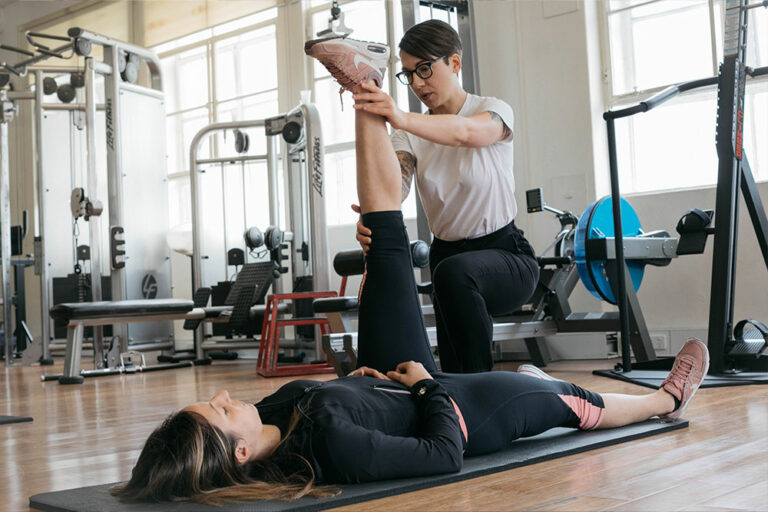Muscle tightness and restricted mobility is a common issue for a number of people training in the gym. Often people will turn to stretching to help fix these issues but what most people aren’t aware of is that there are different types of stretching and different causes of restricted mobility.
Below we will cover the two main types of stretching we like to incorporate for our clients at HFP and why our personal trainers would use them.
Static Stretching
This is the type of stretching most people are familiar with. It involves placing a muscle into a stretched position and holding it for a duration of time.
How static stretching works is by stimulating a part on the end of the muscle called the Golgi Tendon Organ (GTO). The GTO’s job is to sense tension placed on a muscle and if the tension is sustained it causes the muscle to relax. This effect will kick in after 45 seconds of sustained tension – this is why at HFP we advise holding static stretches for 90-120 seconds.
Static stretching works wonders in relaxing a muscle and can consequently have negative effects on strength output so we generally advise on using static stretching after strength training.
PNF Stretching
PNF stands for Proprioceptive Neuromuscular Facilitation. This type of stretching involves placing a muscle in a lengthened position and then contracting the muscle for five plus seconds. After each contraction the aim is to further lengthen the muscle until maximal length is achieved.
PNF stretching works differently to static stretching as it doesn’t involve a relaxation or inhibition of the muscle.
In some instances, a muscle may not be able to stretch as the body is keeping it constantly contracted as there may be too much instability for it to move. By placing the muscle on a stretch and contracting it, you are sending a signal to the brain that there is stability in the stretched position and that it is ok to allow the muscle to stretch.
Since there is no inhibition of the muscle, we advise to try PNF stretching first before using static stretching. If PNF stretching works then there’s no need to static stretch until after training. If PNF doesn’t work, it may be wise to try static stretching.
This is why a one-on-one personal trainer approach can be so beneficial, as our experienced coaches will help you identify what is best for your muscle and your body.




